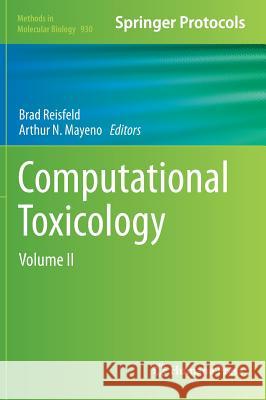Computational Toxicology: Volume II » książka
Computational Toxicology: Volume II
ISBN-13: 9781627030588 / Angielski / Twarda / 2012 / 648 str.
Rapid advances in computer science, biology, chemistry, and other disciplines are enabling powerful new computational tools and models for toxicology and pharmacology. These computational tools hold tremendous promise for advancing applied and basic science, from streamlining drug efficacy and safety testing, to increasing the efficiency and effectiveness of risk assessment for environmental chemicals. Computational Toxicology was conceived to provide both experienced and new biomedical and quantitative scientists with essential background, context, examples, useful tips, and an overview of current developments in the field. This two-volume set serves as a resource to help introduce and guide readers in the development and practice of these tools to solve problems and perform analyses in this area.Divided into six sections, Volume II covers a wide array of methodologies and topics. The volume begins by exploring the critical area of predicting toxicological and pharmacological endpoints, as well as approaches used in the analysis of gene, signaling, regulatory, and metabolic networks. The next section focuses on diagnostic and prognostic molecular indicators (biomarkers), followed by the application of modeling in the context of government regulatory agencies. Systems toxicology approaches are also introduced. The volume closes with primers and background on some of the key mathematical and statistical methods covered earlier, as well as a list of other resources. Written in a format consistent with the successful Methods in Molecular Biology(TM) series where possible, chapters include introductions to their respective topics, lists of the necessary materials and software tools used, methods, and notes on troubleshooting and avoiding known pitfalls.Authoritative and easily accessible, Computational Toxicology will allow motivated readers to participate in this exciting field and undertake a diversity of realistic problems of interest.











